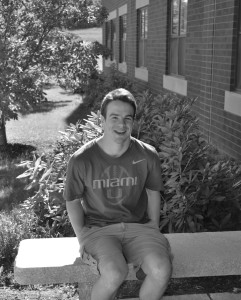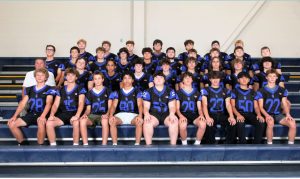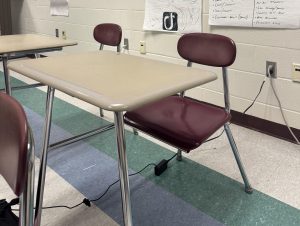Trebuchet talk
“The Big Gurl Brigade” consisting of Ryan Kinney, Jared Noftle, and Casey Wilson, ’14, standing with their trebuchet.
April 23, 2014
In March, physics classes were assigned to do the annual trebuchet project, and they have been busy at work ever since trying to create the perfect design for the project. Students had to create groups ranging from two to five students, and together, each team needed to build a trebuchet, and create an accompanying journal which documented various steps throughout the process.
Many students and staff members outside of physics classes don’t understand all of the requirements that come along with the trebuchet project. Students aren’t solely making a projectile-launching-device, but they also have to follow a list of strict guidelines. Some guidelines for this project include: that they device must be handled in a safe manner by no more than two people, the catapult must release a projectile and ideally throw it 28 to 32 meters (with 30 meters being the target), the trebuchet must be able to fit in a box with the dimensions 1.5m x 1.5m x 1.5m, and each group only has two official throws on the testing day to reach the desired length.
Although many people are aware of the testing on the softball fields, most people don’t know that there is an additional presentation portion following the test day where students describe problems they encountered along the way, what they enjoyed on the project and what they learned. Celeste Marsan, ‘15, said “My group’s biggest challenge was the sling, like finding the right shape and length since there were so many variables. When our results were inconsistent, we had trouble figuring out exactly what was going wrong.” The variables that students like Marsan and her group had to work with included: velocity, angles, height, and time along the range Meghan Flanagan, ‘14, said, “The most rewarding part of this project was getting to test our treb after spending so many weeks working on it.”
For this project, students also had the possibility of receiving extra credit points. Groups could receive ten bonus points if they hit Mr. T or Mr. Wilcox in the 30 meter target zone during their test. Another ten bonus points could be acquired if groups created a five to ten minute long video about the construction and testing process. Lastly, another ten bonus points could be earned if groups dressed in Medieval-inspired attire.
Year after year, trebs are a highly anticipated project in the physics department, and they proved to be a success once again this year.













![Students in Archaeology use tools in a mock excavation. As a class that focuses on hands-on learning, students are able to gain crucial life skills. “[The class] is more hands-on than I thought, and I'm learning way more with physical activities than I do in the classroom,” said student Tess Brown ‘25.](https://cavchronline.com/wp-content/uploads/2024/11/IMG_8390-e1733078359165-278x300.jpg)

